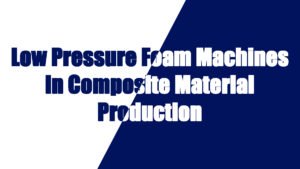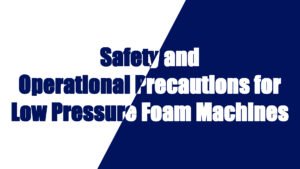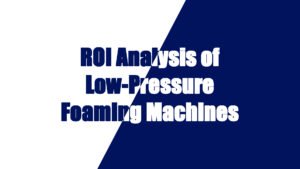What is Package Industry?
The packaging industry refers to the industry that produces, designs, and sells packaging materials, equipment, and packaging services. The main purpose of packaging is to protect products from external factors such as pollution, damage, deterioration, etc. through appropriate forms, materials, and technologies, while ensuring the convenience and safety of products during circulation.
The packaging industry is a broad and diverse field, involving product protection, transportation, display, storage, and convenient use for consumers. Packaging not only plays an important role in industrial production, but is also a key component of brand marketing. With the continuous development of the global economy, the packaging industry is gradually moving towards high efficiency, environmental protection and intelligence.
Market تrends and دrivers
(1) Sustainability and Environmentally Friendly Packaging
Sustainability has become a major trend in the packaging industry. Consumers and businesses are increasingly concerned about the environmental impact of packaging materials, especially plastic pollution. According to Statista, more than 60% of consumers worldwide prefer sustainable packaging products. As environmental regulations become increasingly stringent, the packaging industry has begun to gradually transform to recyclable, degradable, non-toxic and harmless materials.
- Recyclable materials: including paper, glass and some plastics (such as PET, HDPE), etc.
- Degradable materials: such as PLA (polylactic acid), polyurethane, degradable plastics and natural fibers, etc.
- Plant-based packaging: bio-based plastics, paper and plant fiber packaging materials have become emerging green packaging solutions.
- Packaging reduction: optimize design, reduce unnecessary packaging layers, and promote the use of lightweight packaging materials.
(2) Smart Packaging
With the advancement of technology, smart packaging has gradually become an emerging trend in the packaging industry. Smart packaging can not only improve consumer experience, but also enhance supply chain management.
- Functional packaging: for example, temperature indicator labels, humidity control packaging, information traceability systems, etc.
- IT Packaging: By embedding sensors, QR codes and other technologies, it is possible to monitor product conditions in real time and interact with consumers or the supply chain.
- Digital printing: allows small-batch, customized production, improves production flexibility and reduces production costs.
(3) E-commerce and Personalized Needs
With the booming development of e-commerce, a large number of customized and personalized needs have emerged in the packaging industry. For example, the increasing demand for personalized packaging and customized gift packaging has promoted the development of small-batch, high-precision, customized packaging technology.
- E-commerce packaging: In order to reduce transportation losses and improve logistics efficiency, e-commerce platforms require packaging to not only protect the goods, but also be easy to open, lightweight and environmentally friendly.
- Personalized design: Personalized packaging in brand promotion has become one of the market demands. Customized design can not only increase the attractiveness of the brand, but also meet the personalized needs of consumers.
(4) Lightweight Packaging
Lightweight packaging materials are an important trend to reduce resource consumption and transportation costs. Especially in food, beverage and daily chemical packaging, more and more companies are beginning to use lighter and thinner packaging materials to reduce logistics and cost pressures.
- Film technology: including the use of thinner plastic films to package food and daily necessities to reduce material waste.
- Lightweight bottles: such as PET bottles and plastic containers gradually replace traditional glass bottles, reducing weight and transportation costs.
Regional Market Analysis
(1) North America
- Market Size: North America is an important region in the global packaging market, especially the United States, which has strong demand for food and beverage packaging, pharmaceutical packaging and environmentally friendly packaging. The North American packaging market is expected to be approximately US$300 billionin 2023 and will grow to US$460 billion by 2028, with an average annual growth rate of approximately 5%.
- Trend: The packaging market in the United States is mainly driven by environmental requirements, sustainable packaging, smart packaging and personalized packaging needs. Increasingly stringent government policies on plastic waste management have promoted the research and development and adoption of environmentally friendly packaging materials.
(2) Europe
- Market Size: The European packaging market occupies an important position in the global market, especially in the fields of cosmetics, pharmaceuticals and food packaging. The size of the European packaging market is expected to be approximately US$240 billionin 2023 and will reach US$370 billion by 2028, with an average annual growth rate of 7%.
- Trend: The European packaging industry is at the forefront of the world in terms of green packaging and sustainable development. Many countries have promoted plastic reduction regulations, and the use of green packaging materials has gradually increased. The demand for innovative packaging technology and personalized packaging is also increasing.
(3) Asia Pacific
- Market size: Asia Pacific is the fastest growing region in the global packaging market, especially in China and India, where demand is growing. It is estimated that the packaging market in Asia Pacific will be approximately US$400 billionin 2023 and will grow to US$680 billion by 2028, with an average annual growth rate of 8%.
- Trend: The growth of the Asia Pacific market is mainly driven by population base, urbanization, increased demand for consumer goods and the rapid development of e-commerce. In particular, in China, India and Southeast Asia, there is a strong demand for e-commerce packaging, and smart packaging technology is gradually penetrating.
(4) Latin America and Africa
- Market size: The packaging market in Latin America and Africa is relatively small, but due to economic development and growth in consumer demand, the future market potential is huge. It is estimated that by 2028, the Latin American packaging market will grow to US$85 billionand the African market will grow to US$50 billion.
- Trend: The packaging demand in Latin America and Africa is mainly concentrated in the fields of food, beverages and daily chemicals, and consumers’ demand for high-quality packaging and easy carrying is gradually increasing.
Polyurethane in Package Industry
Polyurethane is increasingly being used in the packaging industry due to its versatile properties, including lightweight nature, impact resistance, flexibility, thermal insulation، و moisture resistance. These attributes make polyurethane a valuable material for a range of packaging solutions, particularly in industries where durability, protection, and temperature control are essential, such as in the food, pharmaceuticals, electronics, and consumer goods sectors.
Key Properties of Polyurethane in Packaging
Polyurethane’s distinctive properties make it a preferred material in various packaging applications:
Lightweight: Polyurethane foam is lightweight, which helps reduce shipping costs and make handling easier.
Shock Absorption: Polyurethane provides excellent impact resistance و shock absorption, which is vital for protecting delicate items such as electronics, glass, or pharmaceutical products.
Thermal Insulation: Polyurethane has good thermal insulating properties, making it ideal for temperature-sensitive packaging, such as in food and pharmaceutical shipping.
Moisture Resistance: Polyurethane is resistant to moisture, making it an excellent choice for protecting products from water damage during transit or storage.
Customizability: Polyurethane can be molded into any shape, providing flexibility in designing packaging solutions that fit the specific needs of different products.
Durability: Polyurethane is resistant to wear and tear, ensuring that packaging can withstand the rigors of handling, storage, and transportation.
Environmental Benefits: Polyurethane can be produced from bio-based or recyclable materials, making it a more sustainable packaging option compared to some traditional materials.
Applications of Polyurethane in the Packaging Industry
Polyurethane is used in various packaging applications, including protective packaging, insulated packaging, and specialty packaging. Here are some key applications:
Protective Packaging
Foam Inserts: Polyurethane foam is widely used in protective inserts for packaging fragile products such as electronics, glassware, pharmaceuticals، و luxury items. The foam cushions the product, absorbing shock and preventing damage during handling and shipping.
- Benefits: Custom-fit designs that hold items securely, reducing the risk of breakage or damage.
Packaging for Electronics: In the electronics industry, polyurethane foam is used for protective packaging around items like smartphones, computers, television screens، و other sensitive electronic devices.
- Benefits: Shock absorption, anti-static properties, and customized designs to fit complex shapes.
Cushioning Materials: Polyurethane-based foam products like air cushions or bubble wraps provide cushioning for a wide variety of products, offering protection from impacts during transportation.
- Benefits: Cost-effective, reusable, and recyclable cushioning.
Thermal Insulated Packaging
Cold Chain Packaging: Polyurethane is widely used in the سلسلة التبريد packaging industry, where products such as pharmaceuticals, vaccines, blood products، و food need to be kept at specific temperatures during transportation. Polyurethane foam is used to create insulated boxes و containers that maintain the desired temperature for extended periods.
- Benefits: Long-lasting insulation, which helps maintain the internal temperature of perishable products and sensitive goods during transit.
Insulated Containers: Polyurethane is used to produce insulated boxes or coolers for shipping temperature-sensitive goods, such as fresh food, pharmaceuticals, and chemicals.
- Benefits: Effective insulation reduces the need for additional cooling methods, making packaging more energy-efficient.
Food Packaging
Protective Foam Packaging for Food: Polyurethane is used for packaging perishable food products, such as meats, fruits, vegetables, and ready-to-eat meals. The material’s moisture resistance و insulation properties ensure that food stays fresh during storage and transportation.
- Benefits: Keeps food items dry, safe, and at the right temperature, reducing spoilage and waste.
Refrigerated and Frozen Food Packaging: Polyurethane is used in insulated trays و cooler boxes for frozen foods و refrigerated items. The insulation properties of polyurethane help maintain the cold temperature for longer durations.
- Benefits: Extends shelf life, minimizes spoilage, and reduces the need for additional refrigeration.
Pharmaceutical Packaging
Temperature-Sensitive Drug Packaging: Polyurethane is used in the packaging of temperature-sensitive pharmaceutical products, such as insulin, biologicals، و vaccines. The material’s thermal insulation properties are vital for ensuring these products maintain their effectiveness throughout the supply chain.
- Benefits: Consistent temperature control, protection from damage, and secure containment for sensitive medicines.
Shock Absorption for Medical Devices: Polyurethane foam is used in the protective packaging of medical devices such as surgical instruments, implants، و diagnostic equipment.
- Benefits: Minimizes the risk of breakage and ensures that medical devices arrive intact and sterile.
Custom Packaging Solutions
Custom-Fit Packaging: One of the major advantages of polyurethane is that it can be molded to fit the specific shape of the product being packaged. This provides a secure fit, which reduces movement and the risk of damage during transit. It is commonly used in industries like electronics, luxury goods، و automotive parts.
- Benefits: Custom designs ensure maximum protection and minimize material usage.
Foam Inserts for Industrial Packaging: Polyurethane is also used to create foam inserts و containers for industrial parts and tools, offering protection against impacts and vibrations during transportation.
- Benefits: Protective, durable, and tailored to specific industrial needs.
Sustainable Packaging Solutions
Recyclable and Bio-based Polyurethane: As demand for sustainable packaging grows, polyurethane can be manufactured using bio-based polyols derived from renewable sources like plants. Additionally, some forms of polyurethane are recyclable, reducing their environmental footprint compared to conventional packaging materials.
- Benefits: Environmentally friendly options for companies seeking to meet green packaging standards.
Benefits of Polyurethane in the Packaging Industry
Durability and Strength: Polyurethane is extremely durable, offering long-lasting performance for packaging materials. This reduces the need for frequent replacements and cuts down on waste.
Lightweight: Polyurethane’s lightness helps reduce transportation costs, especially when used for protective packaging, insulating materials, or food packaging.
Thermal Insulation: The thermal properties of polyurethane help maintain temperature stability, which is essential for products sensitive to temperature changes, such as pharmaceuticals and perishable food.
Protection: Polyurethane offers excellent impact resistance, shock absorption, and cushioning properties, making it ideal for protecting fragile or high-value goods during shipping and handling.
Customizability: Polyurethane can be easily molded into different shapes and densities, allowing packaging solutions to be tailored for a wide range of products, from electronics to food to medical supplies.
Moisture Resistance: Polyurethane’s resistance to moisture ensures that products remain dry and intact, particularly for items sensitive to water, such as electronics, pharmaceuticals, and food.
Challenges and Considerations
Environmental Impact: While polyurethane offers many advantages, its environmental impact remains a concern. Conventional polyurethane is petroleum-based and non-biodegradable, though there are efforts to develop bio-based and recyclable polyurethanes to mitigate these issues.
Cost: Polyurethane-based packaging solutions can be more expensive than alternatives like paper or plastic. However, the durability و efficiency of polyurethane often offset the higher initial cost in the long term.
Recycling: Polyurethane is not as widely recyclable as other materials such as PET or paper, though advances in recycling technologies and the development of biodegradable formulations are helping to address this challenge.
Future Trends in Polyurethane Packaging
Bio-based Polyurethane: There is increasing interest in bio-based polyurethanes derived from renewable sources, which would offer a more sustainable alternative to traditional petroleum-based polyurethanes.
Smart Packaging: Polyurethane could play a role in the development of smart packaging, such as packaging with temperature indicators, QR codes, or radio frequency identification (RFID) for tracking and tracing products in real-time.
Enhanced Recycling Techniques: Research into recycling polyurethane more effectively is underway, with new technologies potentially enabling more efficient reuse and reduction of environmental impact.
Sustainable Packaging Demand: As consumers and companies alike continue to focus on sustainability, the demand for eco-friendly polyurethane solutions will likely grow, leading to innovations in biodegradable or recyclable packaging materials.
Conclusion
Polyurethane’s flexibility, durability, thermal insulation، و moisture resistance make it a key material in the packaging industry, especially for protective packaging, temperature-sensitive goods، و custom solutions. While there are some challenges related to sustainability and cost, ongoing developments in bio-based و recyclable polyurethane offer promising solutions. As industries demand more efficient and eco-friendly packaging solutions, polyurethane’s role in the packaging sector is expected to continue growing, offering durable, safe, and sustainable solutions for a wide variety of products.
Next Blog: Polyurethane VS Other Packaging Materials



































